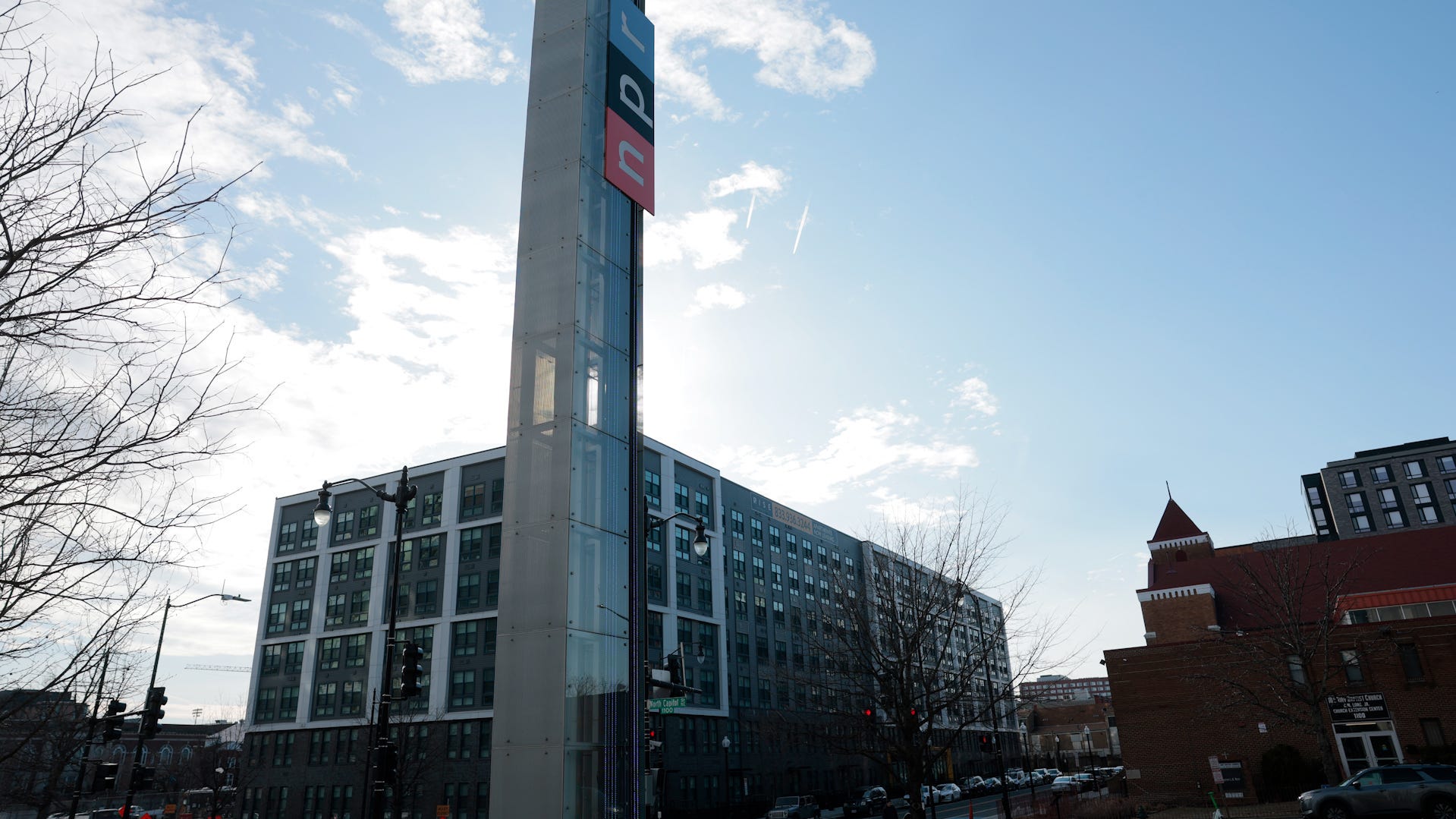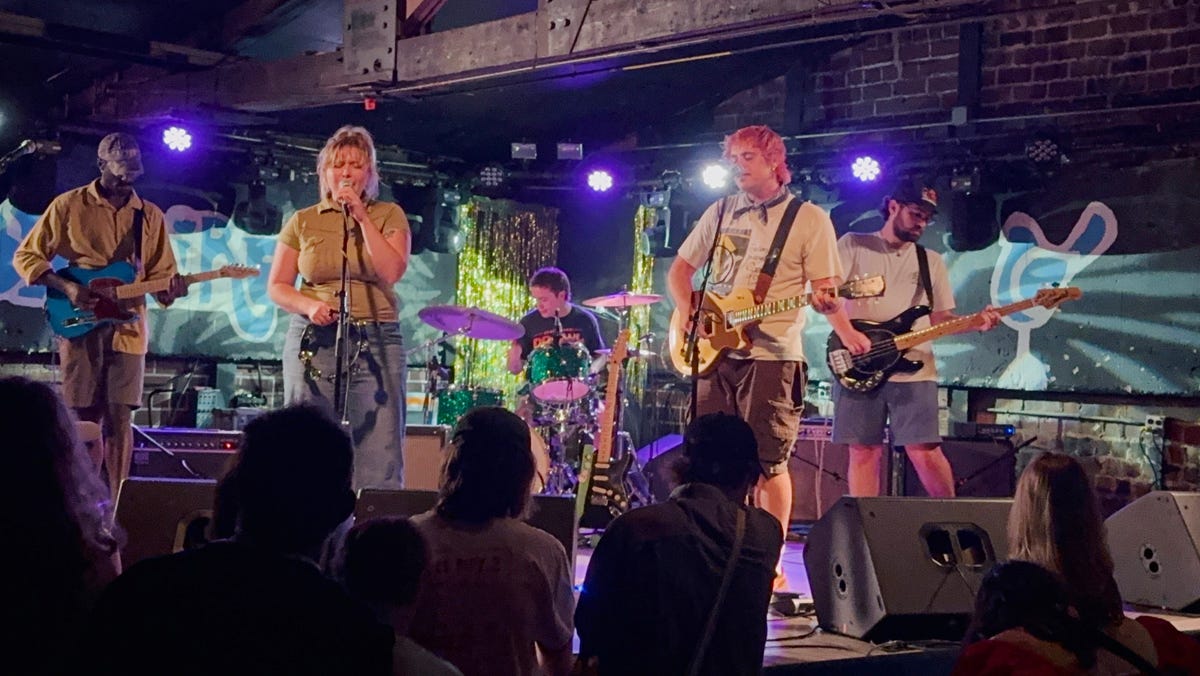Brittany Talissa King
| Special to The Herald-Times

House votes to take public broadcasting, foreign aid funding back
Republican lawmakers won a House vote 214-212 to take back billions in public broadcasting and foreign aid funding.
WFHB, Bloomington’s first community radio station, faces potential funding cuts due to a proposed bill before Congress.The station, operating since 1993, relies on listener support and CPB funding, which is at risk of being reduced.WFHB offers a variety of programming, including local news, music, and youth radio, all produced with the help of volunteers.
This story has been updated to correct an inaccuracy
Here’s a fun fact: Despite the boom of streaming services in our digital age, radio has outlasted over 4 million podcasts, 120 million YouTube channels and billions of video content accessible at the scroll of our thumbs. There are more than 15,000 radio stations nationwide, with 190 in Indiana.
However, there’s only one, We’re Fire House Broadcasting (WFHB), in Bloomington — Indiana’s first community radio station, 100% independent and listener-supported. Since 1993, it’s produced a diverse range of content, including music shows, talk shows, news programs and community events coverage.
The story of WFHB started long before ’93 with founders Mark Hood, Jim Manion and Jeffrey “Sundog” Morris. These were not just a group of roommates, music lovers and radio enthusiasts. They were visionaries who fought for nearly two decades to create a community radio station of their own, “for the people, by the people.”
During the mid 1970s, the commercialization of public radio stations led to a shift in music programming at the expense of local musicians. This shift prompted the emergence of community radio, offering stations a new alternative to maintain their musical autonomy while facing the challenges of limited funding.
WFHB begins with ‘Bloomington Community Radio Project’
For the WFHB founders — Hood, Manion and “Sundog” Morris — money didn’t intimidate them. So, in a small Indiana garage, they conceived a benefit show idea, the “Bloomington Community Radio Project,” which would introduce their concept to the city and raise donations in the process. At $1 a ticket, they conducted the first “project” at the Bluebird nightclub with high optimism but little expectations.
To their pleasant surprise, over 700 people showed up. “That’s where WFHB essentially found its community,” said Brooke Turpin, current development director at WFHB. “(The community’s attendance) was a resounding scream of ‘Yes!’ We want a community radio station that can play local music and talk about things we think are important.”
WFHB’s journey to the airwaves was not without its challenges. Obtaining a license from the FCC was a daunting task that took 18 years. But WFHB finally made their debut in 1993, broadcasting from a cinder block shack south of Bloomington. Nine months later, they moved into a firehouse, the original city hall.
The station garnered much support of people from all walks of life, including Indiana University’s 11th president, Herman B Wells, who played a significant role in securing the station’s new space, calling the founders “the most tenacious group of community organizers ever.”
WFHB’s current staff, programming
Thirty years later, WFHB is still playing strong. Their staff consists of a mighty eight — Jessie Grubb (youth radio director), Josh Brewer (operation manager), Abby Noroozi (music director), Jar Turner (general manager), Brooke Turpin (development director), Jeffrey “Sundog” Morris (chief engineer and founder), Kade Young (news director), and Noelle Herhusky-Schneider (assistant news director).
Another key part of WFHB is its 150-plus community volunteers. From programming and announcing, to production and administrative support, their commitment is the backbone of WFHB’s success.
“WFHB cannot exist without (our volunteers),” Turpin said. “They do incredible work.”
The cool thing is, volunteering is what led General Manager Jar Turner to his current position. After moving to Bloomington in 2008, he started volunteering in 2013, working all areas of the station.
“I got hooked to volunteering because I got to do everything (I was interested in doing),” he said. “I had freedom and creativity in a judgment-free zone.” So, when the general manager position was vacant in 2016, he felt confident to apply. “It was an opportunity for me to step up. And take the station in a direction with intention.”
Turner’s trajectory testifies to the unique opportunities WFHB offers, accessible to anyone who’s pursuing personal connection, professional growth and who wants to have fun.
WFHB continues to be a cornerstone of community for Bloomington, with programming including: WFHB Local News, BloomingOUT, Bring It On, Hola Bloomington and Eco Report, where local topics, matters and voices are empowered through the WFHB airwaves. Firehouse Sessions feature national touring artists, and the Youth Radio Department programming allows the next generation to discover their voices.
“Seeing the teens excited about being on the radio assures me that the future of WFHB will be in good hands,” said Jessie Grubb, youth radio director.
Financial future in question for community radio station
While the station aims to serve all aspects of Bloomington, it’s currently facing a challenging matter.
A current bill before Congress proposes cutting the Corporation for Public Broadcasting’s (CPB) federal funding by nearly 25%. How much is that? It’s $1.1 billion, funding that supports pubic media, specifically locally run stations like WFHB, which depend on that money to operate.
An article in Politico states, “Smaller stations may be forced into hard choices about where to make cuts. And some stations are considering cutting full-time staff they have or canceling some programming they pay to air.”
Unfortunately, for WFHB, this could be the case. “We can’t cut back on the essentials like water, electricity,” said Turner. “What’s going to be affected is our programming and personnel.”
If the bill is passed, it will affect WFHB’s capacity to bring local music and news to the community the way they envisioned. “In the last couple of years, we have grown so much and have gotten a lot of positive feedback from the community,” Turpin said. “It will frankly be sad if we have to slow down now.”
Ways to help WFHB
Here’s some good news: it’s not too late to help!
Here’s a list of ways the Bloomington community can support its community radio station:
Call your representatives. “There are some senators on the fence if they want to pass this bill. Make sure they understand that continued funding for public media is essential to you.” said Turner.Utilize the station’s resources. Visit their website, at wfhb.org, or call to learn how WFHB can serve you.Volunteer. New Volunteer Orientation occurs at the WFHB Firehouse every first Wednesday, every other month, at 6 p.m. RSVP by emailing volunteer@wfhb.org.Donate. Anything helps.Spread the news about the bill. Read “Protect My Public Media” to learn more.Listen to WFHB, 91.3 FM.
Despite this challenging matter, WFHB is not detouring from its mission.
On July 11, they commemorated the first benefit show in 1975 with a “Past and Present: 50 Years of the Bloomington Community Radio Project.” The Bluebird was transformed into a nostalgic haven, adorned with newspaper clippings, their 7-foot Firehouse Dalmatian statue and listening booths playing past episode.
“Celebrating this milestone felt like a big family reunion,” Grubb said. “It was an opportunity to reflect on how far we’ve come, honor the people who made it possible, and to look forward to the next chapter.”
The night was filled with great music from headliner Wishy, and local acts Amy O, Leroy McQueen, and The Vatos Supreme. Like 50 years ago, the spirit in the venue was celebratory of all that’s been accomplished, creating a grateful atmosphere.
“It felt so good to honor the people that created the place that has changed my life,” said Abby Noroozi, WFHB’s music director. “I feel so lucky to be a part of it.”
Kade Young, WFHB’s news director, shared his gratefulness for the founders’ presence at the show.
“It was incredibly heartwarming to see (them),” said Young. “Seeing the pride on their faces and the fruits of their labor was a special thing.”
From WFHB’s humble beginnings in 1975, to their fight to get on the air in 1993, and its current home in the firehouse, no matter the obstacles, their resilience has always persevered. And there’s no way they’re going to turn down the volume now.

